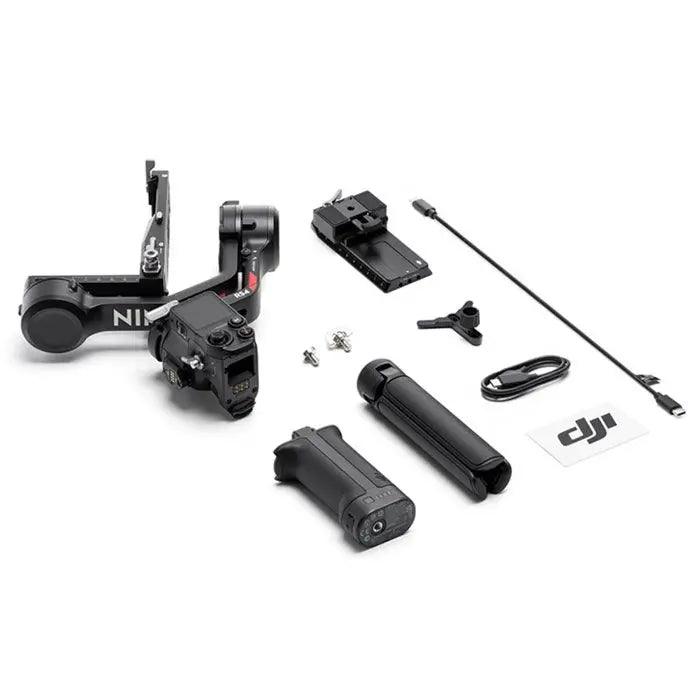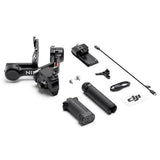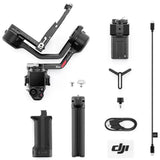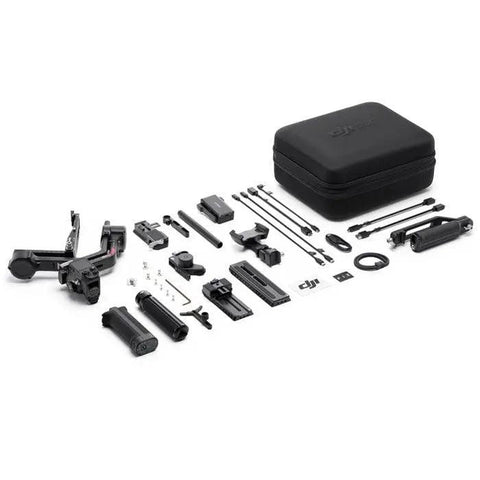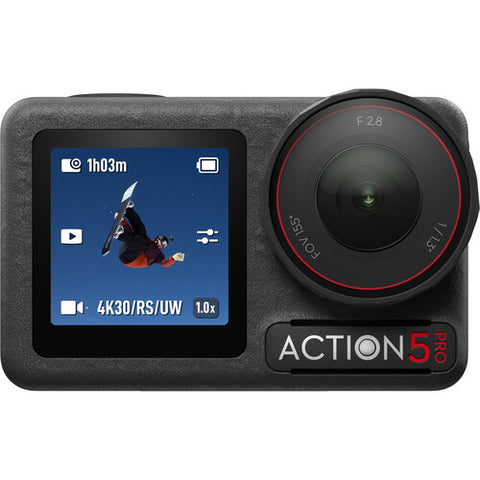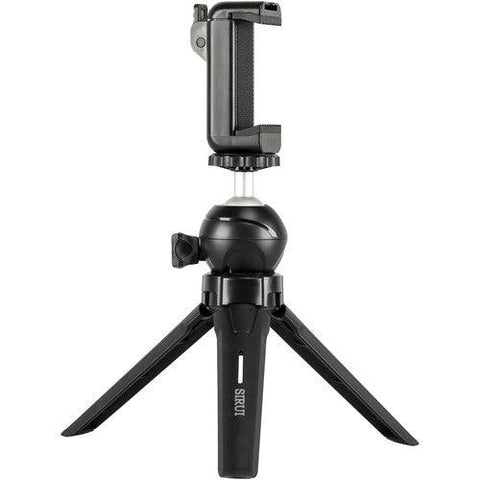- 2nd-Gen Native Vertical Shooting
- 3kg (6.6lbs) Payload Capacity Extended Tilt Axis
- Joystick Mode Switch Zoom/Gimbal Control
- RSA Communication Port Extensive Control Ecosystem
- High-Capacity Battery Grip Approx. 2.5x Battery Runtime
- Teflon - Coated Axis Arms Smoother Balancing
DJI RS 4 Combo Gimbal Stabilizer.
The DJI RS 4 lightweight commercial stabilizer supports next-generation native vertical shooting with enhanced operation efficiency, improved stabilization performance, and an upgraded accessory ecosystem. It empowers solo cinematographers with a more professional and efficient creative experience and the toolset to tell gripping visual stories.
Quick Launch
2nd-Gen Native Vertical Shooting
DJI RS 4 features a newly designed horizontal plate, enabling the second generation of native vertical shooting for faster and simpler operation. Without the need for additional accessories, you can simply release the horizontal plate and secure it into the vertical position for an easy switch to vertical shooting, paving the way for efficient vertical video creation.
2nd-Gen Automated Axis Locks
The automated axis locks allow RS 4 to quickly start working or enter sleep mode, significantly enhancing shooting, transition, and storage efficiency. Additionally, the axis locks have smaller gaps when locked, further reducing gimbal shake.
Our Smoothest Balancing Experience Yet
DJI RS 4 features a Teflon™ coating for all three axes, resulting in reduced friction and smoother balancing.
When switching cameras or lenses, the fine-tuning knob on the tilt axis can move the camera forward or backward, achieving precise, millimeter-level balancing.
The upper quick-release plate has an added adjustable placement guide to ensure secure camera mounting.
Automatic Screen Lock
The OLED touchscreen incorporates a new auto-lock feature. Once locked, the screen will display the current gimbal and joystick modes at a low brightness. This not only prevents accidental touches but also helps to conserve battery power.
Powerful Stabilization
Excellent Payload Capacity
The lightweight body boasts a 3kg (6.6lbs) payload capacity. It can carry mainstream mirrorless camera and lens combinations, enabling comfortable holding with robust power.
Compared with the previous generation, RS 4's tilt axis has been extended by 8.5 mm, offering expanded balancing space. This allows you to mount mainstream mirrorless camera and lens combinations along with accessories like ND filters, broadening the scope for creative potential.
4th-Gen RS Stabilization Algorithm
DJI has comprehensively optimized the next-generation RS stabilization algorithm for different usage scenarios. It strikes a superior balance between stabilization strength and the tactile feel of camera movement, delivering both excellent stabilization performance and an enhanced user experience. Additionally, RS 4 offers significantly improved stability when vertical shooting, easily steadying dynamic shots like running or low-angle perspectives.
Professional Creation
DJI RS 4 supports the professional-grade features of DJI PRO products, delivering superior performance that makes solo creation more efficient.
Bluetooth Wireless Control
DJI RS 4 can remotely control camera shutter and lens zoom with Dual-Mode Bluetooth technology. In zoom control mode, you can use the joystick to control Power Zoom for PZ lenses and Clear Image Zoom, [3] obtaining a native zoom experience. A camera only needs to be paired once, after which it can reconnect seamlessly and automatically.
Support for DJI Focus Pro Motor
When paired with the new DJI Focus Pro Motor, [4] DJI RS 4 allows you to control the lens focus via dial or adjust the lens zoom via joystick. This smooth operation enables efficient lens control.
Trigger Function Customization
The trigger function can be customized to FPV mode, where pressing and holding the trigger makes the gimbal's three axes follow the direction of the grip's movement. This is particularly useful for shooting rotational footage or simulating POV.
Trigger Function Customization
The trigger function can be customized to FPV mode, where pressing and holding the trigger makes the gimbal's three axes follow the direction of the grip's movement. This is particularly useful for shooting rotational footage or simulating POV.

